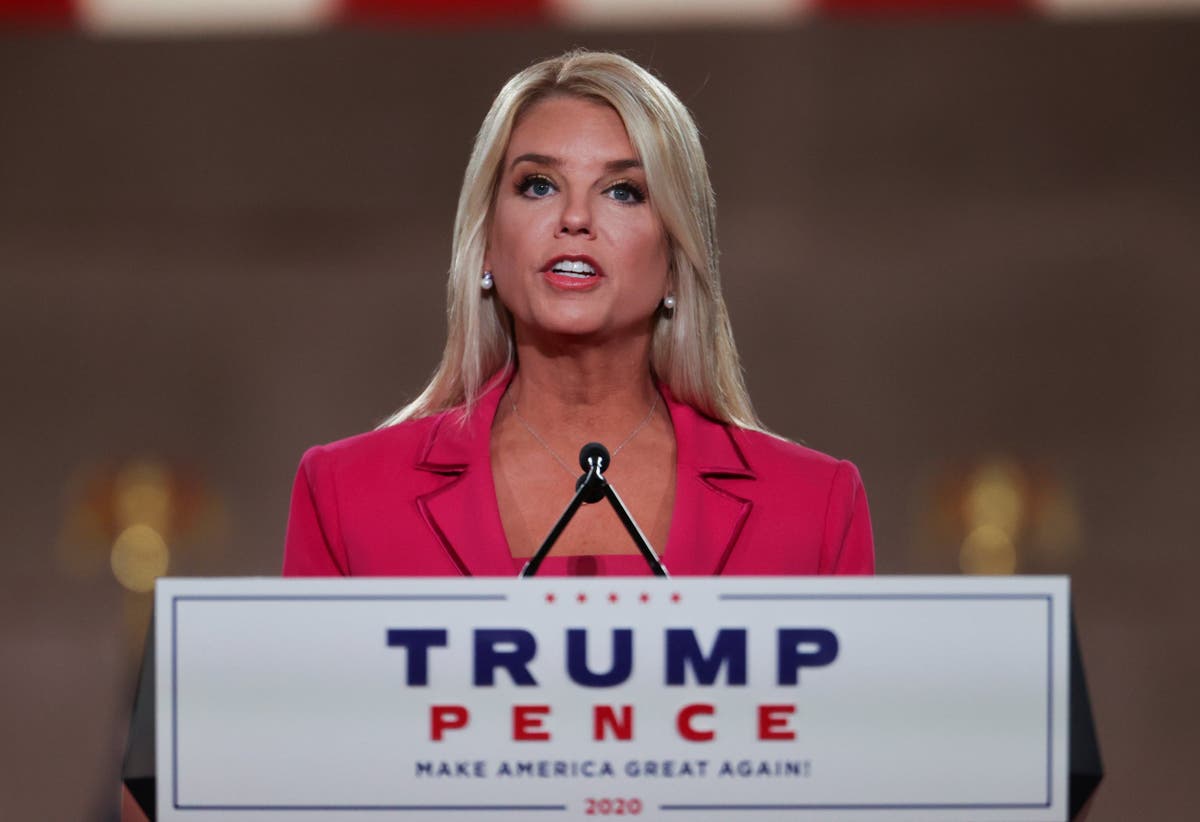
the presidential election, Vice President Kamala Harris to Reading, Pennsylvania — a majority Latino city just an hour outside of Philadelphia. Donald Trump’s campaign had been running outreach to Latino voters in the Berks County city since June, when the Republican National Committee opened a Latino Americans for Trump office as it ramped up its appeals to Latino voters across the state. When votes were counted in Berks County, the gap between the campaigns was stark.
As in 2020, Berks again went for Trump on Tuesday — this time up 4.6 percentage points to 58 percent. Harris received 43 percent of the vote, where President Joe Biden had won 45.
2 percent in 2020. The problem was not that Berks had become a Republican stronghold, but that Democrats had ceded the territory long before Trump opened his campaign office this summer. It was a to progressive organizers across Pennsylvania, who have spent the last several campaign cycles trying to claw back voters Democrats have left on the table.
Related Democratic consultants in Pennsylvania had been caught on their heels in 2016, when Trump flipped the state red for the first time in three decades and won three counties that had voted twice for former President Barack Obama. When Biden won Pennsylvania back in 2020, analysts and organizers attributed the win to the work done in progressive cities like Philadelphia. But it wasn’t the Biden campaign , it was progressives and independents working within coalitions led by groups like Pennsylvania Stands Up, Make the Road Action Pennsylvania, the Working Families Party, and unions like Unite Here and Service Employees International Union.
Democrats’ reliance on progressive enclaves and local organizers to fill the gap they lost with Trump’s first win was never more clear than in the midnight hours heading into Wednesday, as Trump pulled away with electoral votes and Harris’s narrowing path to victory fell once again to voters in cities like Philadelphia. While Biden won 13 Pennsylvania counties in 2020, Harris won just eight — with Trump flipping the counties of Bucks, Northampton, Erie, Monroe, and Centre. As the results solidified for Trump, mainstream media and Democratic pundits turned their fire not at the Harris campaign and the Democratic Party but in two other directions — at minority voters who had drifted, along with white men and women, toward Trump; and at progressives who had either over Harris’s role in the Biden administration’s support for Israel’s war on Gaza.
Most Read Such criticism was misguided, said Working Families Party National Director Maurice Mitchell. Democrats, he said, had ceded turf to Republicans in states like Pennsylvania despite knowing they held the only key to winning the White House. “That coalition is fraying at the margin for a number of reasons,” Mitchell said Tuesday night at WFP’s watch party at the Sheraton Hotel in downtown Philadelphia.
People are asking basic questions of both parties, Mitchell said. “What concretely and materially are we gaining from this relationship? And they deserve answers.” That the race was so close is raising a vital conversation about Democrats’ continued failure to build power outside of the four-year election cycle, said Philadelphia City Council minority whip Nicolas O’Rourke.
“Voting is the last thing that we do in a functioning democracy.” O’Rourke is one of two Working Families Party members on the city council. Local Democrats fought against the WFP, but the group’s wins ousted Republicans from the council in the heavily blue city for the first time in history with O’Rourke’s 2023 win.
He said the focus on whether Black men had strayed from the Harris campaign missed the larger reason for demographic shifts. Related “The issue that I found, more often than not, was not an interest in Trump, it was a lack of interest in engagement. And that has been true beyond just this election season and cycle,” O’Rourke said.
“I continue to believe that there is an opportunity to engage Black men. They feel forgotten, not seen. They don’t see the value in voting — some of them, not all.
...
There’s a lot to be said about engagement from the political parties actually connecting with Black men before you’re expecting them to turn out.” “That is something that every party should be paying attention to, whether it’s election season or not, because a functioning democracy would care about that.” before Harris made her first stop in Reading, Trump held a rally with thousands of people at the city’s downtown Santander Arena.
While Trump made fewer stops in Pennsylvania than Harris — 22 to Harris’s 26 — Republican groundwork targeting voters in Latino, Black, and white working-class neighborhoods allowed him to outperform Democrats, who put much of their focus into persuading affluent voters in blue strongholds. While Latino men and women supported Biden by , exit polls from Tuesday show that of Latino men voted for Trump. Latino women still overwhelmingly supported Harris, but by 6 percentage points less than they had in 2020.
Latino voters in Reading are reachable — Democrats just haven’t put in the work, Reading’s first Latino mayor, Eddie Morán, earlier this month. Morán won his 2019 primary against a Democratic incumbent by doing one thing: talking to Latino voters in neighborhoods Democrats had forgotten. Democratic outreach to Latinos happened largely with the help of groups like Make the Road Action PA, which focuses on engaging Black and brown voters.
The group knocked on more than 560,000 doors, made contact with 50,000 voters in eight counties, and had 413,000 conversations with Latino voters across the state. “In Pennsylvania, the minimum wage hasn’t gone up in 20+ years.” Issues like the cost of living and housing were prominent across those conversations, said Diana Robinson, co-deputy director of Make the Road Action Pennsylvania.
“The rent is too high, people are struggling to pay their bills. That is something we think is unifying to folks across the board,” she said. “In Pennsylvania, the minimum wage hasn’t gone up in 20+plus years.
” Kandice Cabeza, a Harris voter in Northeast Philadelphia, said she came out to support the right to abortion but was not thrilled about either candidate. She’s originally from Baltimore but has lived in Philadelphia for 10 years. “What are you doing for the people? What’s changing with the cost of living, food, medical assistance, and things like that, medical bills? All those things matter too,” Cabeza said.
“I really haven’t heard much about that from neither one of them. They’re kind of feuding over who’s gonna be number one. But what about us? It’s kind of like, fingers crossed that someone looks out for all of us and not just a certain group.
” Join Our Newsletter Original reporting. Fearless journalism. Delivered to you.
Independent groups are doing the work of courting working-class voters that the Democratic Party has stopped trying to reach, said WFP’s Mitchell. “It isn’t necessarily drifting to the right in the way that some political pundits talk about it. Our approach is to take seriously meeting working-class people where they’re at.
” The working class is incredibly diverse, but a core set of issues unifies working people across ideology, Mitchell said. Three Working Families Party candidates flipped House seats in New York, where Democratic losses in the 2022 cycle cost the party the House. and former Rep.
, both Democratic candidates in New York who pivoted to the center, in swing districts. Rep. , D-N.
Y., faced an AIPAC-backed Republican challenger in the Catskills and the mid-Hudson Valley. Ryan campaigned alongside progressive Rep.
Alexandria Ocasio-Cortez, D-N.Y., in October.
He won by 1 percentage point. “Basically, it’s class war, right? There’s a reason why Democrats sometimes talk about taxing billionaires. Because it’s hugely popular.
We just think they need to say that a lot more,” Mitchell said. “This group of working-class voters of all races that have either dropped out of politics in general and are hugely skeptical of politics, or are looking for other politics and are finding populist politics, and sometimes that brings them to the populist right.” In a on Wednesday, Sen.
Bernie Sanders, I-V.T., blamed Harris’s loss on the party’s neglect of working-class voters.
“It should come as no great surprise that a Democratic Party which has abandoned working people would find that the working class has abandoned them. First, it was the white working class, and now it is Latino and Black workers as well,” Sanders said. “Will the big money interests and well-paid consultants who control the Democratic Party learn any real lessons from this disastrous campaign? Will they understand the pain and political alienation that tens of millions of Americans are experiencing? Do they have any ideas as to how we can take on the increasingly powerful Oligarchy which has so much economic and political power? Probably not.
” It’s unsurprising to see bumps in minority support for Trump, Mitchell explained. “When Black people are showing up for Democrats, it isn’t unbridled support and unquestioning support for a political party. It’s a strategic move,” he said.
“I want more Black voters asking questions and the political parties recognizing that there’s a larger and larger component of the Black electorate that is persuadable.” The trends themselves aren’t disturbing, Mitchell said. “How you respond to those trends, I think, is critical.
So if the Democratic Party doesn’t take those trends seriously, then I think they would be in trouble. We’re taking them seriously.”.














